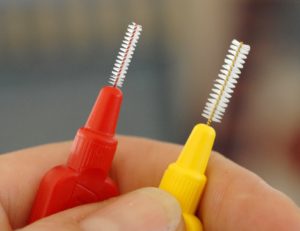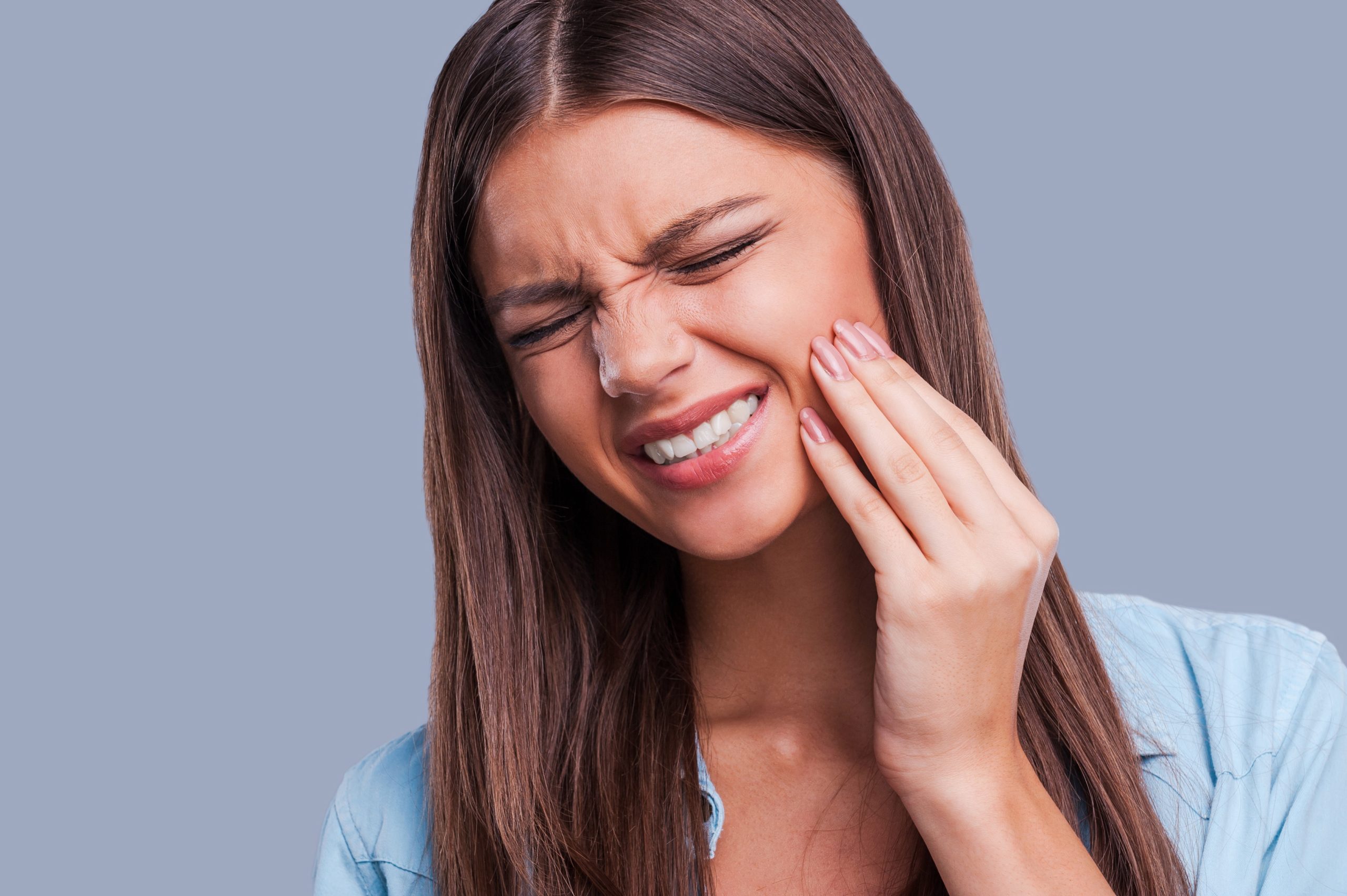There are a lot of benefits to wearing braces, including the end goal of a beautifully straight, healthy smile. It can also come with some challenges! One of those is finding, and maintaining, a really effective dental hygiene routine. Traditional metal braces can make cleaning your teeth thoroughly a little tricky since you’re having to navigate around brackets and wires. But if you’re not able to remove plaque daily, it can build up into the kind of sticky, invisible film that produces bacteria that can lead to the minor gum disease known as gingivitis.
Gingivitis is common, and anyone can develop it, not just those wearing braces. It can sometimes accompany orthodontic treatment, but because it’s reversible, there’s no need to wait until you’re out of braces to get rid of it. Here at Dillehay Orthodontics, we want every part of your treatment process to go as smoothly as possible, and we don’t want to see any of our patients end up with gingivitis! Let’s take a look at what exactly gingivitis is, and why you’re more prone to it if you’re in braces.
Braces + plaque = gingivitis
It’s an awful lot easier to accumulate plaque while you’re in braces, and can be much more detrimental if you do. This is due in large part to the way braces push food particles into the brackets when you bite. While some of this will easily rinse out, some of the debris that gets caught in the tiny spaces between your gums, teeth, and brackets can be very difficult to clean effectively. Because bacteria live and breed in plaque, any time there are areas of it near the gums, it can cause gingivitis.
Gingivitis is essentially an immune reaction by your gums in an effort to keep bacteria at bay. It causes inflammation that results in swelling in the gums. This kind of inflammation also brings the capillaries closer to the surface, which can lead to possible bleeding and pain if left untreated over time.
Orthodontics themselves are what we refer to as controlled inflammation. By helping the gums become more relaxed, it becomes easier for the braces to guide the teeth into their new positions. Since your gums are already inflamed when you’re in braces, it doesn’t take much for bacteria to irritate them even further. Because they’re already under stress from the controlled inflammation, it’s easier for bacteria to irritate them, causing an immune reaction.
Some of the symptoms that can accompany gingivitis are things like:
- red, irritated, swollen gums
- minor bleeding after brushing and flossing
- tenderness in gums
- noticeably bad breath
- loose teeth
If gingivitis is left untreated, a condition called periodontitis may develop. Periodontitis is the more severe form of gum disease. Over a period of time, the body will attempt to naturally fight off the byproducts of the bacteria. It will do this by breaking down the bone and connective tissues that hold the teeth in place, causing the gums to begin receding, and forming pockets in between the teeth. This can lead to serious damage.
Preventing gingivitis while wearing braces
The bottom line is that it’s incredibly easy for inflammation to get out of hand if you aren’t diligent about your dental hygiene habits. Normally, brushing and flossing thoroughly and regularly is enough to stop gingivitis in its tracks. However, when you’re wearing braces, brushing can be difficult, and the ordinary method of flossing can be extremely frustrating, if not altogether impossible, as well as much less effective. Rather than throw in the towel on your oral hygiene, look at some of the alternative products available to help orthodontic patients finish their treatment successfully.
For example, studies have shown that using an interdental brush is one of the best ways a patient in braces can remove plaque. Interdental brushes are thin, round or cone-shaped brushes with a small head of bristles held on by wire. Some of them have short or specially shaped handles to make them easier to grip, while others have long handles that are similar to toothbrushes. These brushes are designed to be inserted between the teeth gently, reaching right into those tight spaces where plaque is likely to build up, and they can be reused several times as long as you brush after each use just like a regular toothbrush. They also come in different sizes, so you’re sure to find one that fits comfortably between your teeth without you having to force it.
 Other oral hygiene actions you can take to help prevent gingivitis while in braces are:
Other oral hygiene actions you can take to help prevent gingivitis while in braces are:
- drink water with meals in order to help wash food particles away
- use a Waterpik, a product that utilizes water pressure to “floss” teeth
- gargle with warm salt water to reduce any irritation
- eat a healthy diet
- use an antibacterial mouthwash
Speaking of mouthwash, when added to a regular regimen of brushing and flossing, it can be an effective form of preventative dental care because it can help kill the bacteria that can eventually build up into plaque. There are too many mouthwashes on the market to count, so here’s what to look for to help prevent and combat gingivitis.
Breath fresheners
Some mouthwashes focus on getting rid of bad breath, or at least masking it. Because many of these brands use antibacterial ingredients as a means of eliminating bad breath, they can be useful in preventing gingivitis. Be aware, though, that a growing number of new mouthwashes focused on eliminating bad breath have chlorine dioxide as a primary ingredient. These may be effective at neutralizing the kind of bacteria that can cause bad breath, but probably won’t do much to fight the bacteria that cause plaque and gingivitis.
Antibacterial rinses
Many over-the-counter mouthwashes contain antibacterial ingredients that can help prevent gum disease when combined with proper brushing and flossing. These often contain essential oils that kill plaque-causing bacteria, such as thymol, eucalyptol, methyl salicylate, and menthol.
 Prescription strength mouthwashes
Prescription strength mouthwashes
Although antibacterial rinses are the most effective kind of over-the-counter mouthwash to fight gingivitis, they aren’t as strong as mouthwashes containing chlorhexidine, because they don’t last as long inside the mouth. Chlorhexidine mouthwashes are only available with a prescription, because they can cause staining of the teeth, and should be monitored by your dentist or orthodontist.
Dillehay Orthodontics keeps your smile straight and healthy
We know all this talk of bacteria, plaque, and gum disease can be overwhelming. But by following our advice and keeping a close eye on your oral hygiene habits, you’ll be able to spot any troublesome signs before they get out of hand, and act on them accordingly. Regular brushing and flossing is still the best way to prevent plaque from breeding bacteria in your mouth, it just takes a little extra effort when you’re wearing braces.
Dillehay Orthodontics care about you and your smile, and we want to offer you the most comfortable orthodontic experience possible! If you notice any of the gingivitis symptoms we’ve talked about today, or if you’re feeling any major discomfort with your braces, don’t hesitate to get in touch with us for help. We’ll schedule an appointment for you at one of our many convenient locations in Wichita and the surrounding area, and check to see what’s causing your discomfort. We’re also happy to provide you with tips on how to keep your smile healthy when you’re at home. Don’t let a little plaque scare you away from a straighter, healthier smile! Whatever your questions or concerns may be, we’re here to get your smile back on track.
